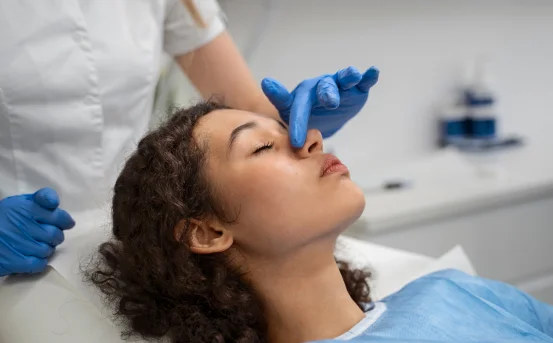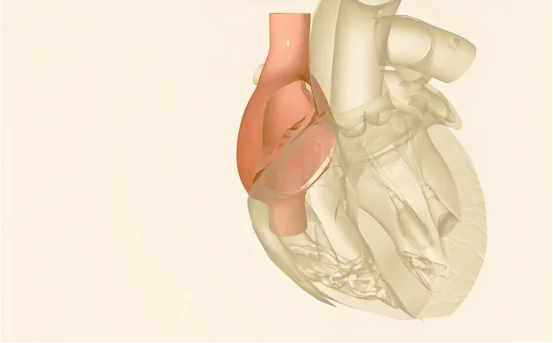Introduction
Rhinoplasty, also known as nose reshaping surgery, is one of the most common plastic surgical procedures performed worldwide. It is done for both cosmetic and medical reasons, such as enhancing facial harmony or correcting breathing issues. While it may appear to be a simple procedure from the outside, rhinoplasty is actually a highly intricate and tailored surgery that requires precise planning, technical expertise, and an understanding of both aesthetic ideals and nasal function.
The procedure can vary significantly depending on the individual’s anatomy, goals, and the surgeon’s preferred techniques. It involves reshaping the bones, cartilage, and soft tissues of the nose to achieve the desired result. Since every nose is different, rhinoplasty is never a one-size-fits-all surgery. From consultation to recovery, the process involves several critical steps, all of which must be executed with great care to ensure optimal outcomes. Here are the key steps involved in the rhinoplasty Surgery procedure
Rhinoplasty Surgery Procedure
- Initial Consultation and Surgical Planning :- The first stage of any rhinoplasty surgery is the initial consultation. This step is crucial in defining the goals of the patient and evaluating their current nasal anatomy. The surgeon will assess facial proportions, the structure of the nose, skin thickness, and any internal issues that could affect breathing. During this visit, photographs are taken from different angles to aid in surgical planning. The patient’s expectations are discussed thoroughly, and realistic outcomes are outlined. Imaging software may be used to create visual simulations of potential results. If the surgery is being done for functional issues like breathing problems, imaging and tests such as nasal endoscopy or a CT scan may also be performed. The surgeon then creates a detailed, customized surgical plan that considers both the cosmetic and functional needs of the patient.
- Anesthesia Administration :- On the day of surgery, the patient is brought to the operating room and prepared for the procedure. Rhinoplasty is usually performed under general anesthesia, though in some cases, local anesthesia with sedation may be used. The choice depends on the complexity of the surgery and the patient’s health status. General anesthesia ensures the patient remains unconscious and pain-free during the operation. The anesthesiologist monitors the patient’s vital signs throughout the surgery to maintain safety and comfort.
- Making the Incisions :- Once the patient is under anesthesia, the surgeon begins by making the necessary incisions. There are two primary approaches to rhinoplasty: open and closed. In open rhinoplasty, an incision is made across the columella (the strip of skin between the nostrils), allowing the surgeon to lift the nasal skin and have a full view of the internal structures. This approach offers better access for more complex reshaping. In closed rhinoplasty, all incisions are made inside the nostrils, resulting in no visible scarring. This technique is typically reserved for less extensive procedures. The choice of incision is based on the complexity of the surgery and the changes needed. Both techniques are designed to minimize visible scarring and preserve the integrity of nasal tissue.
- Reshaping the Nasal Structures :- With the internal structures exposed, the surgeon proceeds to reshape the nose according to the surgical plan. If the patient desires a smaller nose or smoother bridge, bone and cartilage may be removed or shaved down. If more definition or support is needed, cartilage grafts may be added. These grafts are typically taken from the septum (the wall between the nostrils), but in revision or complex surgeries, cartilage may also be harvested from the ear or rib. Grafts are often used to correct asymmetry, support the nasal tip, or reconstruct collapsed areas. In functional rhinoplasty, structural corrections such as straightening a deviated septum or enlarging narrowed airways are performed to improve breathing. The surgeon carefully balances aesthetic goals with the need to preserve or enhance nasal function.
- Refining the Nasal Tip :- One of the most delicate aspects of rhinoplasty is refining the nasal tip. This involves adjusting the shape, angle, projection, and rotation of the tip to achieve better harmony with the rest of the face. Depending on the existing anatomy and desired outcome, the tip may be narrowed, lifted, or reshaped. Special attention is paid to maintaining the strength and support of the nasal tip to ensure it does not droop over time. The surgeon uses various suturing techniques and grafts to maintain stability and achieve a natural-looking result.
- Correcting Internal Structures for Functionality :- In addition to aesthetic modifications, functional rhinoplasty includes work on internal structures to correct breathing issues. This may involve septoplasty to straighten the nasal septum, turbinate reduction to improve airflow, or reinforcement of the nasal valves with grafts. Even in cosmetic rhinoplasty, it’s essential to assess and preserve nasal function. A successful surgery not only improves appearance but also ensures the patient breathes comfortably post-operation.
- Closing the Incisions and Applying Dressings :- Once the necessary adjustments have been made, the incisions are carefully closed using fine sutures. In open rhinoplasty, the external columellar incision is stitched with delicate technique to minimize visible scarring. In closed rhinoplasty, no external stitches are necessary. Splints or soft nasal packing may be placed inside the nose to support the new structure and prevent bleeding. An external nasal splint is usually applied to maintain the shape of the nose and protect it during the initial healing phase. The patient is then moved to the recovery room for monitoring.
- Recovery and Postoperative Care :- Rhinoplasty recovery varies from person to person, but most people experience swelling, bruising around the eyes, and nasal congestion during the first week. The external splint is typically removed after 5 to 7 days. Internal dressings, if used, may be removed around the same time. Patients are advised to avoid strenuous activity, heavy lifting, and blowing their nose during the first few weeks. Swelling can take months to fully subside, especially in the tip of the nose, but most of the visible changes become apparent within the first month. Follow-up visits are scheduled to monitor healing, remove stitches if needed, and ensure the nose is settling as expected. Full recovery and final results often take up to a year.
Conclusion
The rhinoplasty procedure is a complex and highly individualized surgery that requires meticulous planning and skilled execution. From the initial consultation to the final stages of healing, every step is designed to harmonize the appearance of the nose with the rest of the face while maintaining or improving nasal function. Whether performed for cosmetic, functional, or reconstructive purposes, rhinoplasty can have a profound impact on both appearance and quality of life. Choosing a qualified and experienced surgeon, understanding the procedure, and maintaining realistic expectations are essential to achieving a successful outcome.























